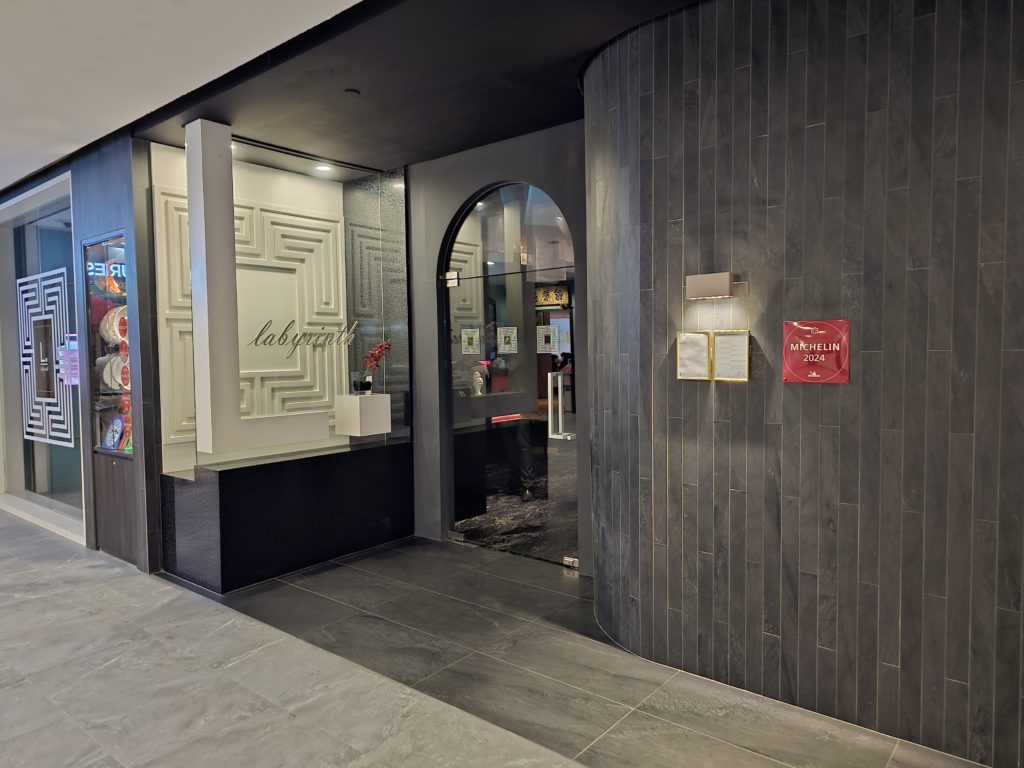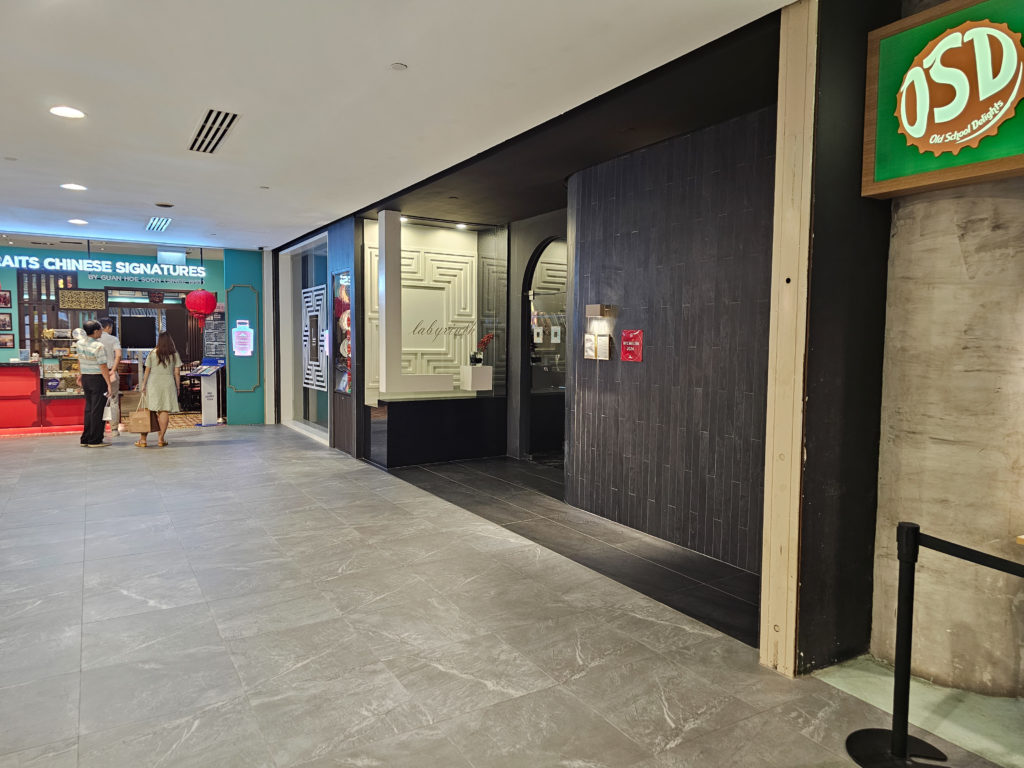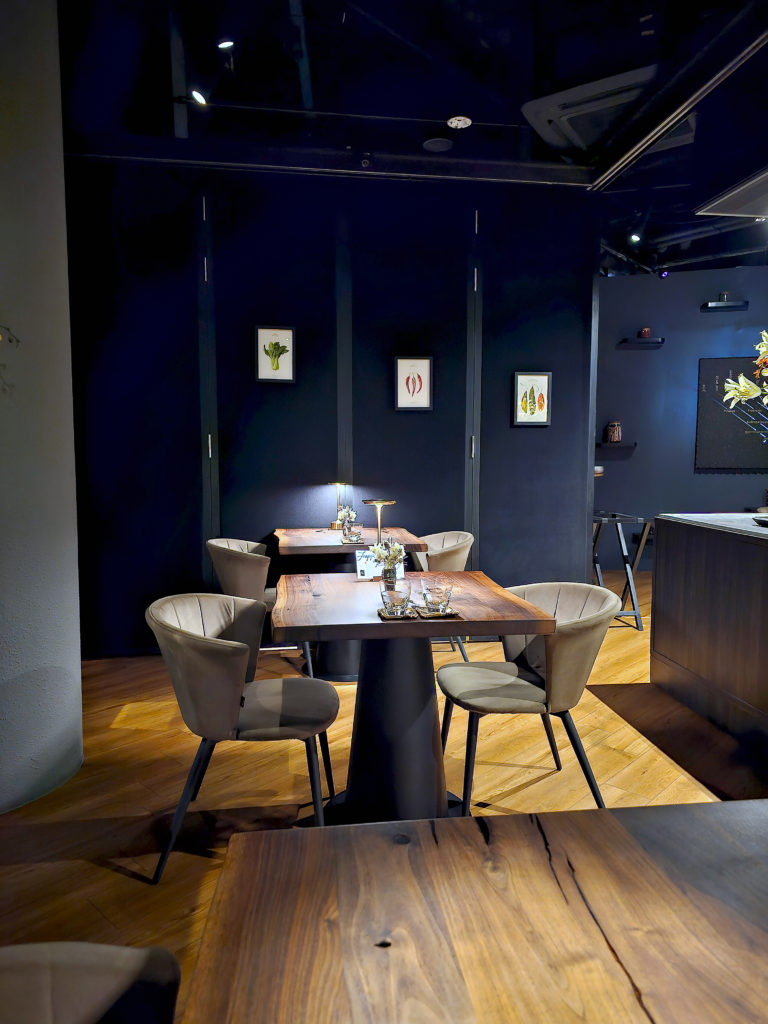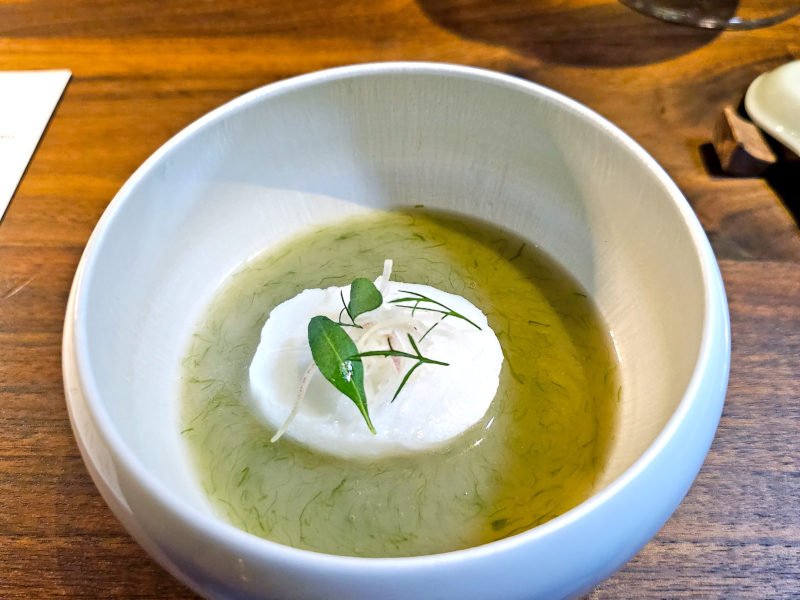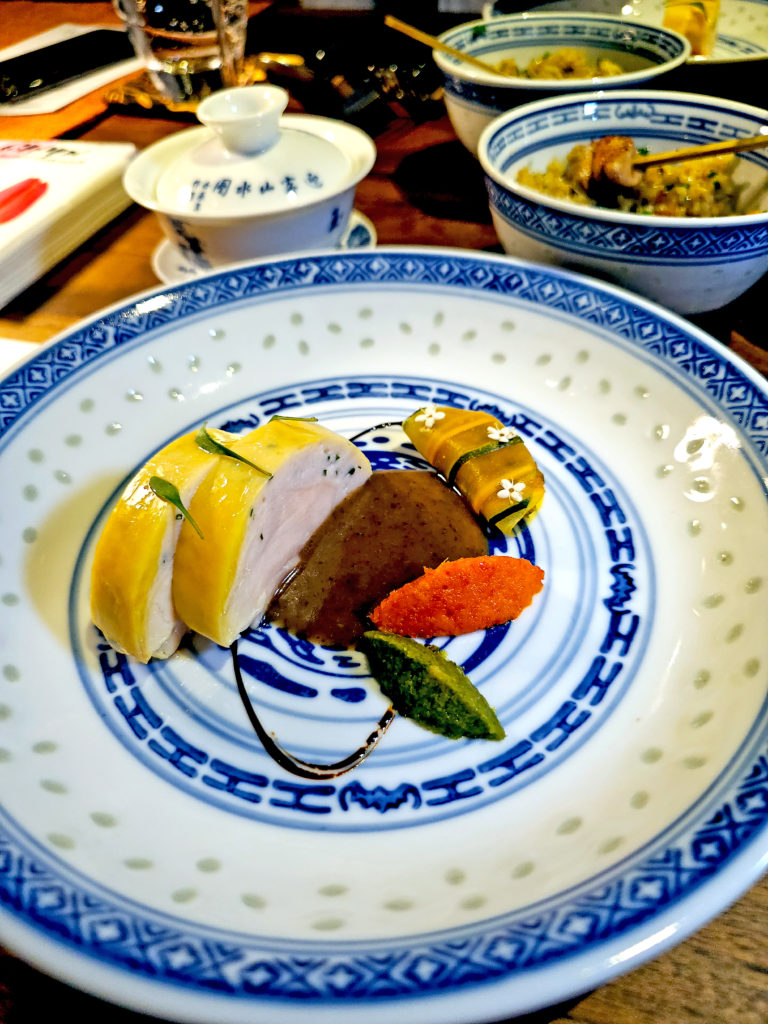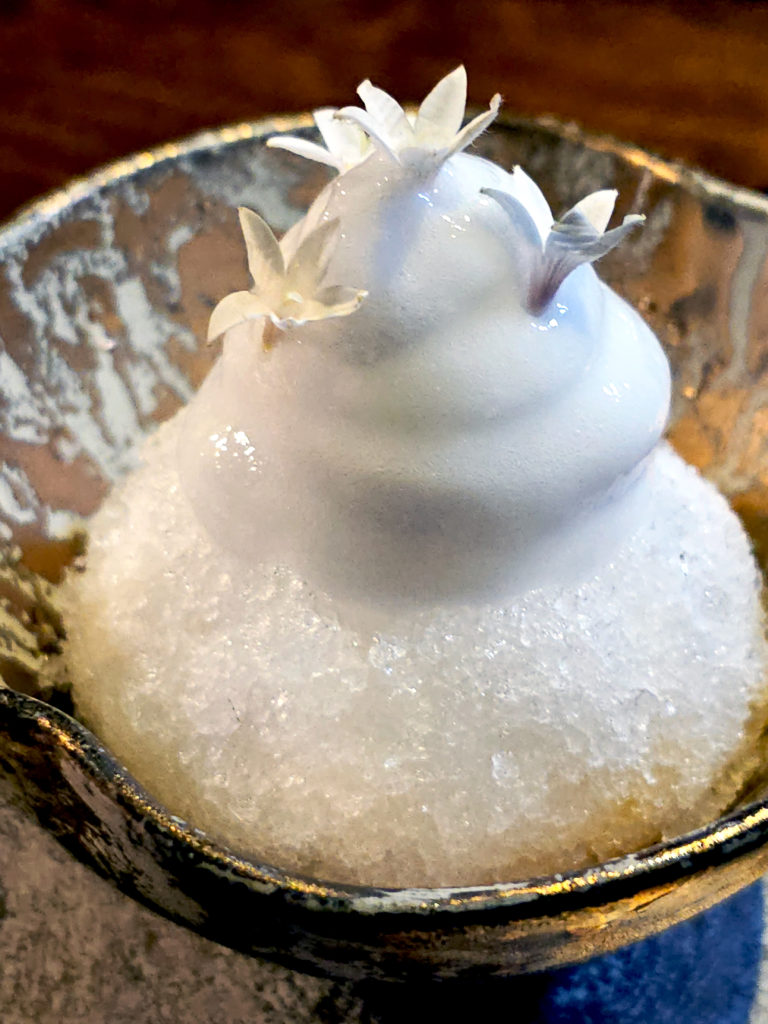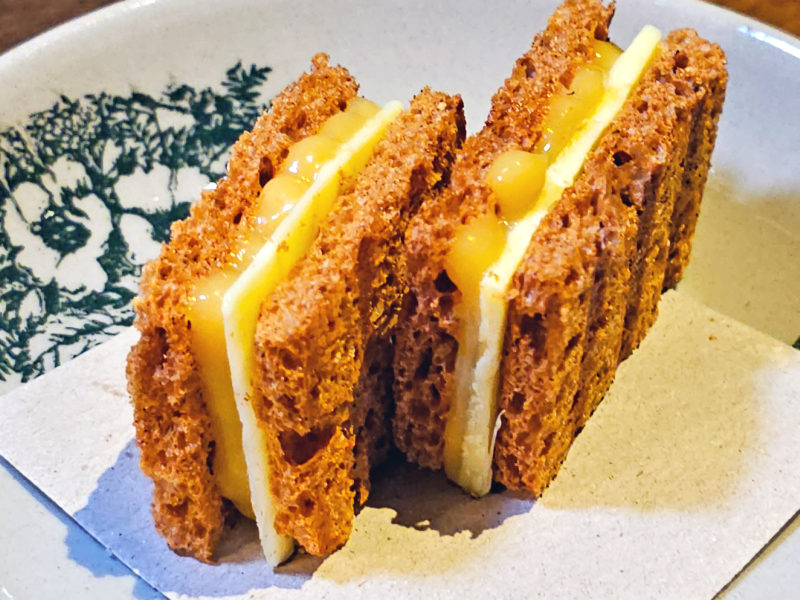Dinner at the one-Michelin-starred Labyrinth restaurant in Singapore left a lasting impression on us and earned a spot on our list of the top ten culinary experiences of 2024. While in Singapore, we were searching for a place where we could experience an intriguing reinterpretation of local flavors and traditional recipes – and we definitely made the right choice.
Singaporean cuisine is a unique melting pot of flavors, drawing from the rich cultural and ethnic heritage of the city-state. It blends Chinese, Malay, Indian, and Indonesian influences, which intertwine with Peranakan (Nonya) cuisine – a distinctive fusion of Chinese and Malay traditions. Additionally, culinary traditions shaped by historical trade connections and colonial influences play a significant role, bringing elements of Portuguese and British cuisine. Modern international influences, resulting from globalization and the dynamic nature of the city, further enrich its culinary landscape. This fusion makes Singaporean gastronomy remarkably diverse and open to innovation, with its street food scene recognized as one of the world’s most celebrated examples of culinary heritage. It is precisely Singapore’s street food, served in large hawker centres, that inspired the tasting menu at Labyrinth.
The restaurant’s chef and owner, LG Han, bases his culinary philosophy on reinterpreting traditional Singaporean flavors using local ingredients, paying tribute to his cultural heritage and childhood memories.
Before embarking on his culinary career, LG Han graduated from the London School of Economics and worked in finance. However, his passion for cooking led him to change his career path and open Labyrinth in 2014, a restaurant that became an expression of his roots and childhood memories of growing up in Singapore in the 1980s and 1990s.
In 2018, after two years of research and exploration, LG Han redefined Labyrinth’s concept to embrace an authentic, local farm-to-table approach. Today, between 60% and 90% of all ingredients used in the restaurant come from Singapore, highlighting his commitment to supporting local producers and sustainable culinary practices.
His innovative approach to Singaporean cuisine has earned him international recognition, placing Labyrinth at No. 30 on Asia’s 50 Best Restaurants in 2024 and No. 92 on the World’s 50 Best Restaurants list in the same year.
LG Han actively shares his experience and passion for Singaporean cuisine, collaborating with other chefs and participating in international culinary events, promoting the unique flavors and traditions of his country.
The restaurant is located in Esplanade Mall, a modern shopping and cultural center situated within Esplanade – Theatres on the Bay, one of Singapore’s most iconic landmarks. Known for its unique architecture resembling the spiky durian fruit, the venue sits in the heart of the city, right next to Marina Bay, offering spectacular views of the Singapore skyline. It’s well worth taking advantage of the scenery – after dinner, guests can take the elevator up to the observation deck, which provides a breathtaking view of Marina Bay Sands. The complex features numerous restaurants, cafés, boutiques, as well as spaces dedicated to art and crafts. Esplanade Mall is part of the larger Esplanade complex, which houses concert halls, theaters, and exhibition spaces, making it one of the most significant cultural hubs in Southeast Asia.
However, this location makes finding the restaurant quite a challenge. We entered through the bayfront entrance and wandered through the mall’s corridors for quite some time, growing slightly impatient and surprised by its unusual placement. Fortunately, the dining experience was well worth the search.
The restaurant’s location in a shopping mall comes with another minor inconvenience – guests who wish to use the restroom need to notify the staff in advance, as the dishes are served in quick succession and the walk to the restrooms is quite long.
Inside, the restaurant features a dark color palette, creating a cozy and intimate atmosphere that contrasts sharply with the bright and modern shopping mall outside. Stepping across the threshold feels like entering a completely different world. The interior design is simple, with wooden tables that stand out due to their irregular edges. It’s no surprise that the owner chose to showcase the natural beauty of the wood rather than covering the tables with tablecloths – after all, a tablecloth wouldn’t suit the style of this dining experience. Another eye-catching feature is the impressive collection of Michelin plaques from recent years, proudly displayed on the wall.
But let’s move on to the dinner itself. The experience incorporated many elements from hawker centres, not only in the dishes themselves but also in how the table was set. To begin with, the tasting menu consisted of eleven courses, with the option of a wine or tea pairing. Both choices sounded incredibly tempting, but in the end, we decided on the wine pairing – especially since all the wines were sourced from Asia!
At the start of the meal, we were served a local favorite from hawker centres – sugarcane juice. However, this version came with a twist, enhanced by tamarind foam and a pinch of chaat masala. The result was both refreshing and aromatic, thanks to the addition of spices, setting the stage for an intriguing and delicious evening.
Next, a large, round, bright yellow tray was placed on our table, its shape and color reminiscent of the tables found in hawker centres. Along with it, our server brought us a packet of tissues labeled “Chope” (which we later received as a souvenir), using it to “reserve” our table.
In Singapore, “chope” is a widely practiced way of reserving tables at hawker centres and food courts. The method is simple: a person “claims” a table by leaving an item on it, typically a packet of tissues, a loyalty card, or a bottle of water. Though unofficial, this practice is widely accepted and respected, allowing diners to secure a table before ordering their food. The habit has become so ingrained in Singaporean dining culture that some places even offer tissue packets printed with the word “Chope.”
Interestingly, “Chope” is also the name of one of Singapore’s most popular restaurant reservation apps, further emphasizing how deeply this concept is embedded in local dining traditions.
On our bright yellow table, we were presented with popular hawker centre snacks, each reimagined in Chef Han’s signature fine dining style.
We started with Otah – a spiced fish paste, traditionally wrapped in banana leaves and grilled, here served with finger lime for a citrusy burst.
Next came Honey Soy Chicken, featuring chicken stuffed with abalone, drizzled with freshly squeezed calamansi juice and served with a spicy sauce. Inspired by an everyday local favorite, this version left us in awe. The lightly crispy, sweet-salty skin, rich umami notes, the abalone inside, and perfectly balanced seasoning made it an unforgettable bite.
Another highlight was Roti John, a miniature take on the traditional Singaporean sandwich. Instead of a baguette, this version featured a tomato macaron, encasing an omelet wrapped around tomato tartare. It may not have looked spectacular in the photos, but the flavors were absolutely divine.
The final snack was inspired by Coin Prata, a mini version of the local paratha. Here, it was stuffed with French blue cheese and paired with an eggplant and seafood curry. The dish was bold, aromatic, and packed with layers of flavors, yet everything harmonized beautifully. A true masterpiece!
These appetizers were just the beginning of our culinary journey. The first starter was Rainbow Yusheng, a creative take on the traditional festive salad, usually served with fish during Chinese New Year. In this version, it was accompanied by Shima Aji, a Japanese striped jack, served sashimi-style with stingless bee honey, fermented tomato snow, mango, and colorful pickled vegetables. The dish was delicate, slightly sweet and tangy, incredibly fresh, and the accompaniments beautifully contrasted with the rich, fatty fish. The pairing with Singapore’s first and only sake was also a fantastic match.
Next was Bak Kut Teh, traditionally made with pork ribs simmered in an aromatic broth of herbs and spices. Naturally, this was a reinterpretation of the classic dish. At the bottom of the bowl was a Japanese chawanmushi, topped with slices of Mangalitsa pork belly, sea grapes, and garlic-shaped spheres filled with garlic paste. The dish was then finished with a mushroom-based broth and drizzled with Kampot pepper-infused oil from Cambodia. The depth of aromas and umami – from the garlic, mushrooms, and rich broth – was astounding, while the spicy peppery note added the perfect finishing touch.
The next course, a reinterpretation of Chilli Crab, was the chef’s signature dish – polished, perfected, and refined over time. And it truly impressed us. Tomato and chili ice cream was paired with delicate snow crab meat, topped with a crab-shaped tuille, and vibrant edible flowers, including a pink cosmos flower with fresh citrus notes reminiscent of green mango. The dish was served with pancino, a savory doughnut filled with rich crab sauce, which provided an intense contrast to the light, refreshing crab dish. To complement the flavors, we were served a white wine from a rare Taiwanese grape variety, with sweet lychee aromas and a dry grapefruit finish. Pure poetry!
We remained in the seafood realm, but the next dish was inspired by Bak Chor Mee, a popular Singaporean noodle dish with minced pork. Here, however, the “noodles” were made from squid, accompanied by pork in various textures – minced and crispy. The highlight of the dish was a perfectly seared, massive Hokkaido scallop. We love creative surf-and-turf combinations, and this was undoubtedly one of the best we’ve ever had.
After the noodle dish, it was time for another soup. This time, it was a fish soup, made from fish bones and seaweed, which gave it a green color and a thick, velvety, slightly sticky consistency, reminiscent of the broths and sauces we had tasted at Paco Pérez’s restaurants. Alongside it, we were served noodles made from fish. The dish had a deep seafood flavor – marine yet delicate. No single ingredient overpowered the others, allowing us to fully savor its pure oceanic essence. The pairing with Lebanese wine featuring notes of salty olives was a perfect match.
For the intermezzo, we were served ice cream inspired by the traditional block-cut ice cream sold on the streets of Singapore. Our palates were refreshed with ginger flower sorbet, featuring a pomegranate center and red pepper on top. The flavors were incredibly cooling, invigorating, and absolutely delicious!
One of the highlights of the evening was the main course, inspired by Hainanese Chicken Rice, arguably one of Singapore’s most iconic dishes. On the plate, we found chicken stuffed with a chive-chicken mousse, prepared sous vide – incredibly juicy, tender, and melt-in-the-mouth soft. It was served with bold accompaniments, including a zucchini taco filled with fermented achar vegetables, the chef’s grandmother’s homemade chili sauce, and a ginger-scallion sauce.
However, the uncontested star was the rice – first stir-fried, then cooked in broth, and finally finished in a clay pot, creating the perfectly crisp socarrat layer, much like in Spanish paella. The rice was seasoned with ginger, lemongrass, garlic, kombu, pandan leaf, and an array of other aromatics. At the final stage, it was mixed with scallions before our eyes and served with grilled chicken hearts. It was simply outstanding! Our delight must have been evident, as the restaurant kindly packed the remaining rice for us to take home 😊.
Of course, we can’t forget the aromatic chicken broth that accompanied the Hainanese chicken, served with silken tofu, rounding off this incredible dish.
Time for dessert! We began with a dessert inspired by two classic Southeast Asian treats: Ice Kachang and Chendol. Ice Kachang is a traditional Singaporean shaved ice dessert, also popular in Malaysia and other parts of the region. Its name literally means “bean with ice”, as one of its key ingredients is red beans. Chendol, on the other hand, is another iconic dessert featuring green rice flour jelly noodles flavored with pandan, palm sugar syrup (gula melaka), and coconut milk.
In our bowls, we found mint jelly, pandan noodles, red beans, and tangerine peel, all topped with a fluffy mound of shaved coconut water ice, freshly grated before our eyes using a special Swan ice machine imported for the restaurant. A coconut espuma was added on top for extra creaminess. The dessert had a truly unique flavor profile, with strong notes of coconut, pandan, and tangerine. It was both sweet and refreshing, and watching it being prepared was an experience in itself.
Next, we were served corn parfait, shaped like an actual ear of corn, with burnt butter ice cream inside. We were encouraged to enjoy it with typical pasar malam sweets, including sorghum popcorn, cotton candy with popping candy, and warabi mochi—a traditional Japanese dessert made from warabi starch, giving it a soft, jelly-like texture. The ice cream was sweet but delicious, and we loved the playful presentation. We truly appreciated how the chef shared the flavors of his childhood through these nostalgic sweet snacks. While we’ve often said that popcorn in fine dining restaurants isn’t our favorite thing, this time, both the presentation and the story behind it won us over.
One of Labyrinth’s strongest assets is its outstanding service. The lady who took care of our table was incredibly warm, friendly, and professional. We were also deeply impressed by the sommelier, who not only created a brilliant wine pairing but also told its story beautifully. Chapeau bas!
We found the entire dining experience nothing short of brilliant. Labyrinth is more than just a restaurant—it’s a story of the city and its people, told through flavors. Signature Singaporean dishes like Chilli Crab and Hainanese Chicken Rice are reimagined in an unexpected, innovative way, breaking traditional culinary boundaries. Every element of the menu is thoughtfully designed, blending tradition with modernity.
For us, this was one of the best examples of how street food can be transformed into fine dining, offering guests a deeper understanding of local culture, heritage, and flavors. As foreign visitors, we especially appreciated this experience.
If you’re in Singapore, make sure to visit the hawker centres first—and then head to Labyrinth to rediscover these seemingly ordinary flavors in a whole new way.




